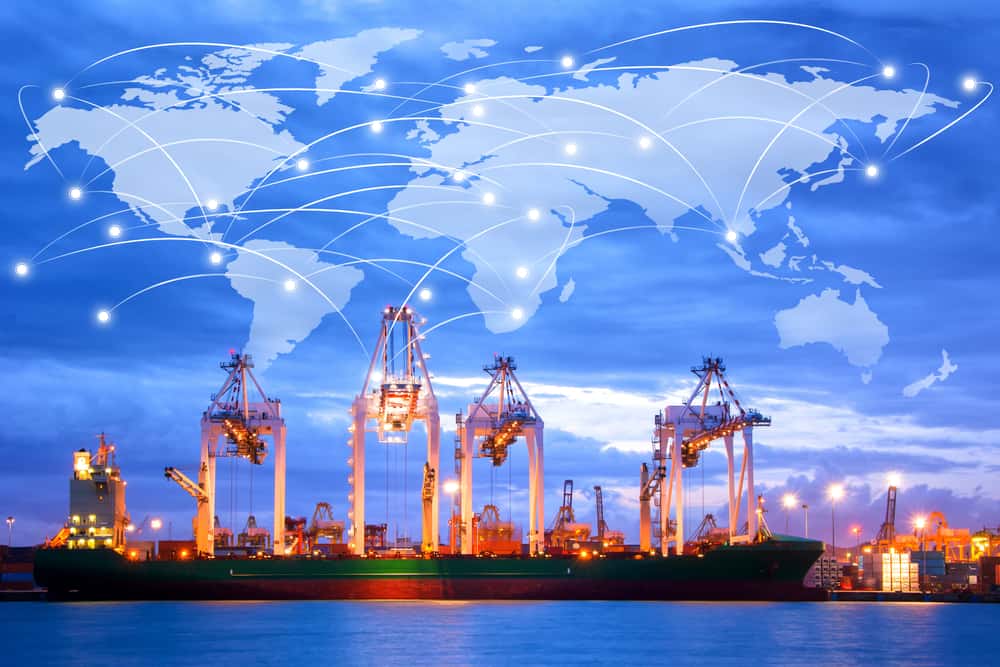The COVID-19 pandemic was a major disruptor for the global shipping industry.
Demand for goods plummeted as nations locked down and individuals began to quarantine. Supply chains collapsed as factories shut down and ports closed due to health and safety concerns. Delays increased as manufacturers and logistics companies added new layers of safety protocols and new procedures to keep their employees and customers safe. The impact from COVID-19 was rapid and terrible, but global trade and major economies seem to be making a faster recovery than anybody expected.
According to the United Nations Conference on Trade and Development (UNCTAD), global trade has already rebounded and surpassed pre-pandemic levels. This strong recovery is primarily being driven by East Asian economies, whose early success in controlling COVID-19 and reopening manufacturing was vital to satisfy the growing global demand for both consumer goods and raw materials. It took only four quarters for world trade to return to pre-pandemic levels. By the fifth quarter (Q1 2021) global trade had already surpassed levels recorded before the pandemic (Q4 2019). This rapid of a recovery is unprecedented in recent times. It took thirteen quarters for global trade to fully recover from the 2015 Chinese stock market crash. After the 2008/2009 recession it took nine quarters for global trade to return to pre-recession levels.
This rapid recovery in global trade is important to allow the world’s major economies to bounce back and recover from the COVID-19 pandemic, but it also creates further turbulence in the shipping and logistics industry.
Trade imbalances and changing trade patterns are forcing logistics companies to rethink the way they route their containers around the world. In the U.S., an increasing trade gap is upsetting the flow of containers in and out of the country. In March 2021, U.S. household income rose by 21.1% which was the largest monthly increase since 1959. Increased income (along with the $1,400 stimulus checks that were distributed in March) have helped boost spending and increased the nation’s demand for imported goods. US exports are also recovering from the pandemic, but imports are expected to continue growing vigorously, outpacing the recovery of exports and expanding the trade gap with Asia. The Port of Long Beach Executive Director, Mario Cordero, has been vocal that the massive demand for imports from Asia has created a shortage of containers left available to carry American exports. During a meeting of the US House Ways and Means Committee on April 29th 2021, Cordero said “These containers, which we don’t have enough of, are not being held here for American exporters. What is happening is international carriers are rushing to have those containers sent back to Asia to bring back more imports.” Mr. Cordero’s concerns underline how the rapidly changing post-pandemic trade patterns are putting a massive strain on the established international shipping routes.
As supply chains around the world continue to transform, empty shipping containers have been left in places they are not needed and some new developing East-to-West routes have seen significant container shortages. In April 2021, UNCTAD published an article titled “Container Shipping in Times of COVID-19: Why Freight Rates Have Surged and Implications for Policymakers” which calls upon policymakers and logistics companies to focus on improving the tracking, forecasting and organization of container shipping around the world. It is more important than ever that logistics companies understand their customer’s needs and that they are ready to adapt if supply routes change. The COVID-19 pandemic has proven that in today’s modern world, trade and supply chains can shift drastically and rapidly. It is vital that logistics companies remain resilient and versatile so that they can adjust and fulfill the shipping needs of an ever-changing global market.




